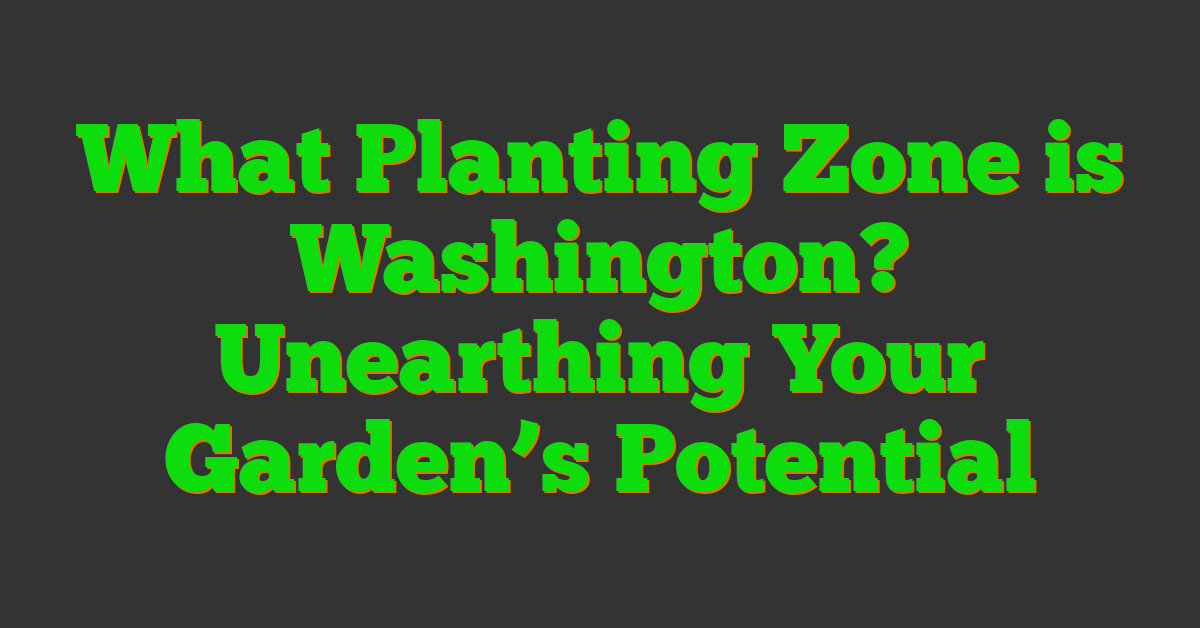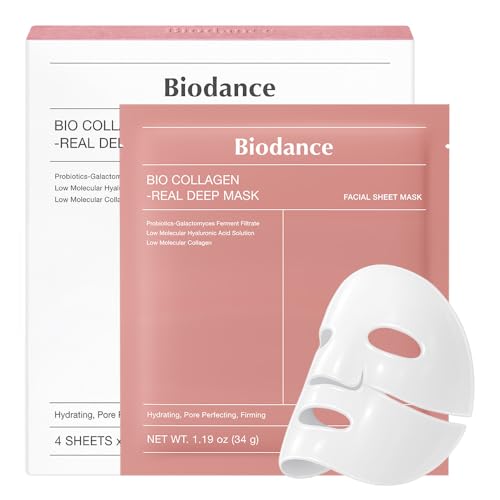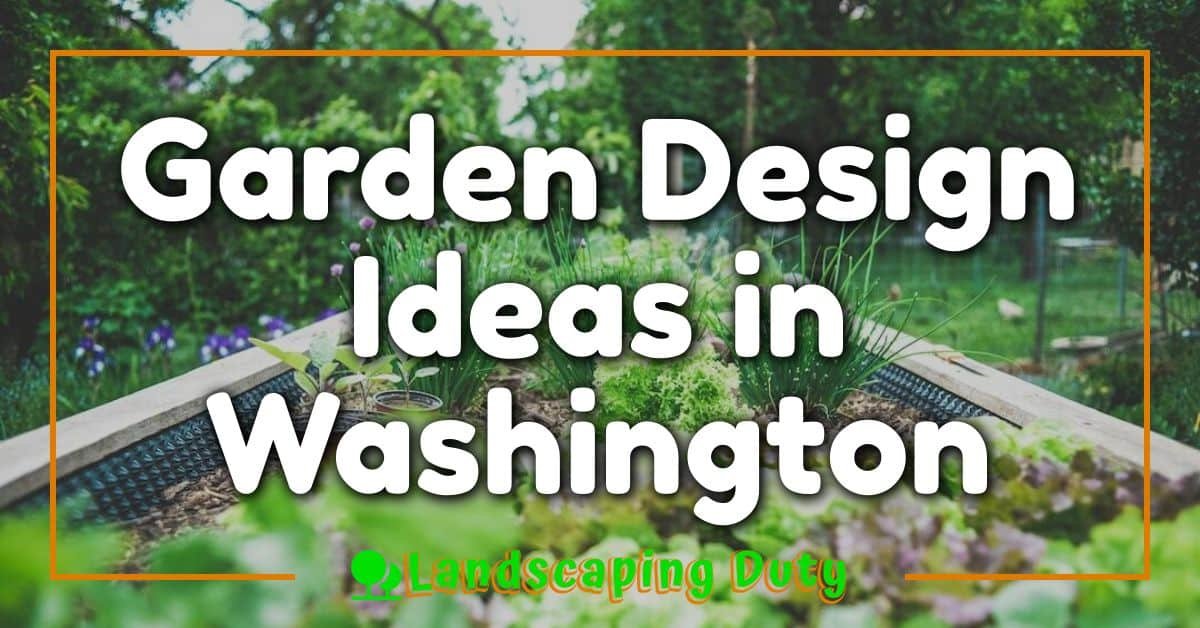Ready to get your green thumb working, but unsure where to start? Well, if you’re living in Washington state and planning to cultivate a garden, knowing your planting zone is key. The United States Department of Agriculture (USDA) has divided the country into different zones based on their average minimum winter temperature. For our dear Washington State, it’s nestled within USDA zones 4 through 9.

Now, you might be thinking – that’s a pretty wide range! And you wouldn’t be wrong. You see, Washington’s diverse geographic features make it home to various microclimates. From the chilly Alpine conditions in the Cascade Range (hello Zone 4!) to the milder climates along the Pacific Coast (that’s where Zones 8 and 9 kick in), there’s quite an array of temperatures at play.
So what does this mean for your gardening plans? Simply put – location matters! Whether you’re keen on growing heirloom tomatoes or looking forward to a vibrant tulip bloom – understanding what grows best in your specific zone can set you up for success. So go ahead, dig into that soil and watch as your garden thrives with life!
Understanding Planting Zones: A Quick Overview
Ever wondered why some plants thrive in certain regions while others kinda fizzle out? That’s what planting zones can help you understand. They’re like nature’s cheat sheet for gardening! Also known as hardiness zones, they provide a handy guide to which plants will flourish where. So let’s dive into these magical maps and see how they can green up your thumbs!
First off, it’s important to know that the USDA (United States Department of Agriculture) is the one who came up with this system. Back in the 1960s, they started categorizing areas into different zones based on their average lowest winter temperature. Sounds simple enough, right? But wait…there’s more!
You see, each zone differs by a 10-degree Fahrenheit range. We’ve got Zone 1A (think super cold!) at below -60F and Zone 13B (like tropical paradise) at above 65F. Here’s a quick glance:
| USDA Zone | Temperature Range |
|---|---|
| 1A | -60F and Below |
| 2A | -50F to -55F |
| 3A | -40F to -45F |
| 4A | -30F to -35F |
| 5A | -20F to -25F |
| 6A | -10F to -15F |
| 7A | 0 to -5 F |
| 8A | 5 F–10 F |
| 9A | 20 F–25 F |
| 10A | 30 F–35 F |
| 11a | 40 F–45 F |
| 12a | 50 F–55 F |
| 13b | >65f |
Now don’t mistake these planting zones for weather forecasts though! They’re about long-term averages, not daily fluctuations or freak snowstorms.
So how does all this relate back to Washington? Well, we’ll get into that in the next section. But for now, just remember: understanding planting zones is all about knowing your region’s cold hardiness – a.k.a., how well plants can handle cold weather. And trust me, it’ll make choosing the right plants way easier!
What Is a Planting Zone?
Ever scratched your head and wondered, “what’s this ‘planting zone’ they’re talking about?” Well, you’re not alone! Let’s unravel this mystery together. A planting zone, also known as a hardiness zone or growing zone, is a geographical area defined by climatic conditions. It helps gardeners figure out what plants are most likely to thrive at their location.
You see, the U.S Department of Agriculture (USDA) crafted a nifty map that breaks down North America into 11 separate zones. Each zone represents an area of winter hardiness for the plants of agriculture and our natural landscape. It’s all about the cold here – how low temperatures drop in winter. The lower the temperature can get in your region, the higher your zone number will be.
Here’s some food for thought: Zones range from 1b (-45 degrees Fahrenheit) to 13b (65 degrees Fahrenheit). That’s quite a temperature difference! If we were to lay these numbers out:
| Zone | Temperature |
|---|---|
| 1b | -45F |
| … | … |
| 13b | +65F |
So why does this matter? Imagine planting a delicate flower that adores warm weather in an icy-cold region; it’ll shiver its petals off! Understanding which plants suit your specific planting zone can save you time, money and lots of heartache when those beloved blooms wither away due to unsuitable weather conditions.
But there’s more than just cold temperatures at play here. Other factors such as soil type, rainfall patterns and daylight hours also come into consideration when determining plant suitability. And remember – these zones aren’t fixed rules but rather guidelines designed to aid you on your green-fingered journey.
Now next time someone mentions ‘planting zones’, you’ll know exactly what they’re talking about. So go ahead and flex your newfound knowledge! Let’s dive deeper into the specific planting zone of Washington in our next section. Stay tuned!
Why Do Planting Zones Matter?
Ever wondered why that lush, lemon tree thriving in your neighbor’s yard just won’t take root in yours? Chances are it’s all about the planting zone. See, every plant has a comfort zone where it grows best. It’s not just about how green your thumb is!
Understanding your planting zone is like getting a cheat sheet for gardening success. It tells you what plants will flourish in your area and which ones might struggle. For example, if you’re trying to grow tropical plants in Washington state, you’re going to have a tough time. This region falls in USDA hardiness zones 4-9, which means winter temperatures can drop as low as -30°F! Not exactly beach weather for those sun-loving plants.
When we talk about planting zones or ‘hardiness’ zones, we’re referring to the USDA Plant Hardiness Zone Map. This tool divides North America into 13 separate zones based on average minimum winter temperature. Each zone represents a difference of 10°F from its neighbors. So, when browsing at the nursery and you see tags labeled with “Zone 5”, now you’ll know they’re talking about plants hardy enough to withstand winter lows of -20°F to -10°F.
Think of these zones as guidelines rather than strict boundaries though! They don’t consider other crucial factors such as soil type or rainfall: two aspects that significantly influence plant growth too.
So why does this matter for Washingtonians? Well, being aware of your specific planting zone allows you to:
« What Planting Zone is Maryland In? Your Quick Guide to Garden Planning What Planting Zone is Alaska? Unraveling the Mystery for Your Green Thumb »
- Choose plants more likely to thrive
- Avoid wasting time and money on unsuitable species
- Plan proper planting times
Who knows? Armed with this knowledge, maybe next season it’ll be your garden turning heads on the block! Remember though: while sticking within your zone increases chances of success, tending to your garden with love makes even more of a difference.
Specifics About Washington’s Climate
Here we go, diving into the nitty-gritty of Washington’s climate. Let’s set the scene: imagine you’re standing in your garden, trowel in hand, wondering what to plant. Your green thumb is itching to get going, but first – it’s crucial to understand the environment you’re working with.
Washington is a state defined by variety – and that includes its climate. In fact, it’s split into two primary climate zones due to the Cascade Range. If you’re on the west side of these mountains, expect a maritime climate with cool summers and mild winters. But if you’ve nestled yourself east of this range? Well then, you’re dealing with a more continental-type climate where summers are hotter and winters are colder.
| Climate Zone | Summer Temperatures (°F) | Winter Temperatures (°F) |
|---|---|---|
| Maritime (West) | 60 – 80 | 20 – 50 |
| Continental (East) | 70 – 90 | 0 – 40 |
Rainfall varies too; western Washington gets plenty of rain compared to its eastern counterpart. So if water-loving plants are your thing, they’ll thrive out west! The average annual precipitation ranges from about 160 inches in areas like Forks to less than eight inches in places like Wenatchee.
- Annual Precipitation
- West: up to ~160 inches
- East: as low as ~8 inches
The growing season? That’s another story altogether! Depending on where you live within Washington State can mean a difference between enjoying around 150 or up to near 250 frost-free days per year!
It’s not just weather patterns that make an impact though; altitude plays a part too! From sea level all the way up to towering mountain peaks – elevation changes across Washington create microclimates. These pockets of unique environmental conditions can shift what plants will thrive in your garden.
In the end, it’s about working with Mother Nature, not against her. Knowing Washington’s climate specifics arms you with the right information to make your garden a beautiful, thriving oasis!
Defining Washington’s Planting Zone
Let’s dive into the world of gardening in Washington, shall we? If you’re a green thumb residing in this beautiful state, understanding your planting zone is crucial. But what exactly is a “planting zone?” Essentially, it’s a guide to help gardeners and landscapers like you know which plants are most likely to thrive at a location.
Washington State falls under USDA Hardiness Zones 4 through 9. What does that mean for you as a gardener or landscaper? Well, consider these zones as your roadmap to successful gardening! Each zone represents an area of winter hardiness for the plants of agriculture and our natural landscape.
- Zone 4 might be considered “tough love” territory for certain heat-loving varieties—think tomatoes or corn—but it’s perfect for cool-weather plants such as kale, spinach, and peas.
- Zones 5 and 6, where winters can still get pretty chilly but not extreme, offer more flexibility with options like apples, pears, and many types of berries thriving here.
- In Zones 7 through 9, there’s even more variety available for planting. Here you’ll find conditions favorable to growing peaches, sweet potatoes—even olives!
But don’t think these zones limit your creative endeavors – they’re just guides. With proper care and attention (and perhaps some greenhouse assistance), ambitious gardeners have been known to push their boundaries.
We can’t talk about Washington’s planting zones without mentioning microclimates either! These are localized areas within your garden where temperatures may vary from the rest of the property due to factors such as wind exposure or proximity to buildings. They could affect how well certain plants grow.
In short: knowing your specific planting zone in Washington isn’t just handy—it’s essential! It helps ensure all those hours spent tending to your garden aren’t wasted on plants that aren’t suited to your specific location’s conditions. Happy planting!
How to Use Your Planting Zone for Gardening in Washington
You’ve got your shovel, seeds, and soil ready. But wait! Did you check your planting zone? If you’re scratching your head wondering what that is, don’t worry. We’re here to guide you through this crucial step in gardening.
In the gardening world, it’s all about location, location, location…specifically, your USDA Hardiness Zone. Washington state spans from Zones 4b to 9a. What does that mean? Well, these zones help determine which plants will thrive in your area based on average minimum winter temperatures.
So if you live in Seattle (zone 8b), then lavender or rhododendrons would be top picks for your garden as they love a moderate climate with mild winters and cool summers. On the other hand, folks living in Spokane (zone 6b) might want to stick with hardy perennials like peonies or daylilies which can withstand colder temps.
Here’s how these zones break down:
| City | USDA Hardiness Zone |
|---|---|
| Olympia | 8a |
| Seattle | 8b |
| Spokane | 6b |
Knowing your planting zone isn’t just about choosing the right flowers or veggies for your garden though. It also helps with figuring out when it’s best to plant certain crops and how much watering they’ll need throughout their growth cycle.
- For instance: In warmer zones like Olympia’s one could start sowing tomato seeds indoors as early as February.
- Conversely: In colder zones such as Spokane’s one probably wouldn’t get those tomatoes going until April.
Remember – Mother Nature doesn’t follow a strict calendar so keep an eye on local weather patterns too!
Now that we’ve covered the basics of using planting zones for gardening in Washington – go ahead and dig into this newfound knowledge! Happy gardening!
Common Plants Suitable for Washington’s Planting Zone
Now, you’re probably wondering what kind of plants thrive in the Evergreen State. Let’s dive into some of the most popular flora that adds color and life to our gardens here!
First off, there’s the Rhododendron, a native plant that is also Washington’s state flower. This evergreen shrub blooms with vibrant flowers in springtime and can withstand cool temperatures typical of this planting zone.
Next up are Western Sword Ferns. You’ll see these lush green beauties scattered across the woodland areas in Washington. They’re hardy plants that can handle shady spots and damp soil – conditions often found in Washington.
Speaking of shade-loving plants, let’s talk about Hostas! These leafy greens are perfect for those darker corners of your garden. They come in different sizes and shades of green creating an interesting texture contrast.
If you love adding bursts of color to your landscape, then you should consider Penstemons or Beardtongues as they’re sometimes called. With their tall spikes adorned with tubular flowers ranging from white to pink to purple, they’re just the ticket for attracting hummingbirds.
And who could forget about Hydrangeas? These deciduous shrubs bloom large clusters of flowers throughout summer into fall – a real treat for any gardener! Plus, did you know that you can alter their color by changing the pH level of your soil? Now isn’t that something?
Here’s a quick rundown:
- Rhododendron – Vibrant springtime bloomer; state flower
- Western Sword Fern – Thrives in shade & damp soil
- Hosta – Perfect for dark corners; offers size & texture variety
- Penstemon (Beardtongue) – Attracts hummingbirds; colorful bloomers
- Hydrangea – Blooms large flower clusters; color can be altered by soil pH
So, there you have it! These are some of the top picks for Washington’s planting zone. Remember, gardening isn’t just about choosing the right plants. It’s also about understanding your environment and working with what you’ve got. Happy gardening!
Conclusion: Thriving Gardens in Washington’s Planting Zone
You’ve come a long way, fellow green thumb! With all the knowledge you’ve gathered about Washington’s planting zones, you’re more than ready to create an oasis right in your backyard.
Remember that Washington spans USDA Hardiness Zones 4 through 9. This wide range means your plant choices can be as diverse as the state’s unique landscapes!
Here’s a quick recap of what we’ve learned:
- Zones 4-5: Best for hardy plants such as Douglas fir or Western Hemlock.
- Zones 6-7: These zones are great for diverse plants like the Pacific Rhododendron and Salal.
- Zones 8-9: Here, Mediterranean-style gardens with plants like Lavender or Rosemary will thrive.
But don’t get too caught up on these details! Your garden should reflect who you are. Go ahead and experiment with different types of plants – make it personal, make it yours!
Keep in mind that successful gardening isn’t just about picking the right plant for your zone. It’s also about understanding your local climate and soil conditions. Make friends with local nurseries and other gardeners – they’re wellsprings of knowledge catered specifically to your area.
Sticking to native plants is always a good idea since they’re adapted to survive in their home turf. Not only will this make your life easier but it’ll also support local wildlife. Now that’s killing two birds with one stone (or should I say, planting one seed!)
So go ahead! Roll up those sleeves and plunge into the vibrant world of gardening in Washington. You got this!










